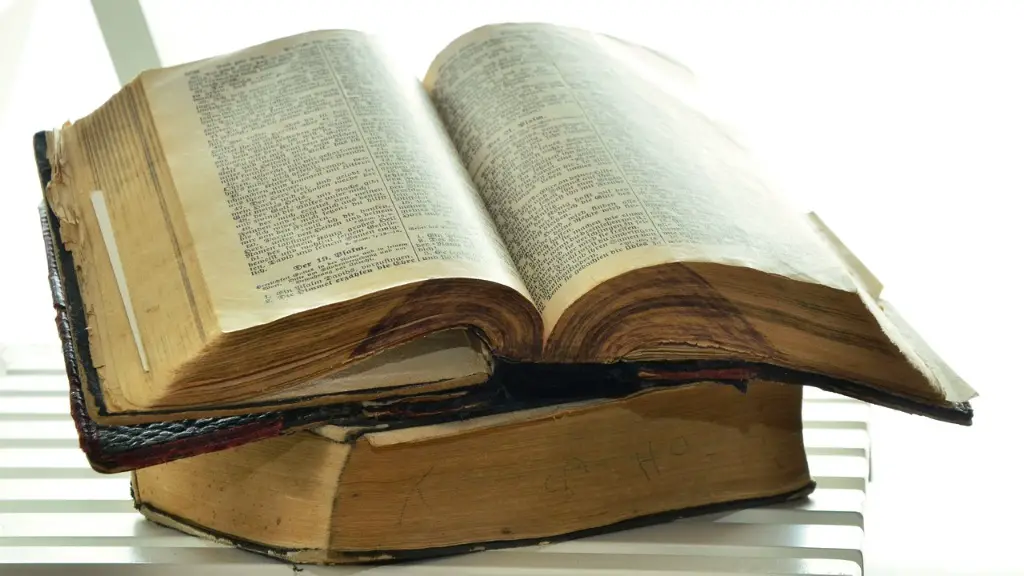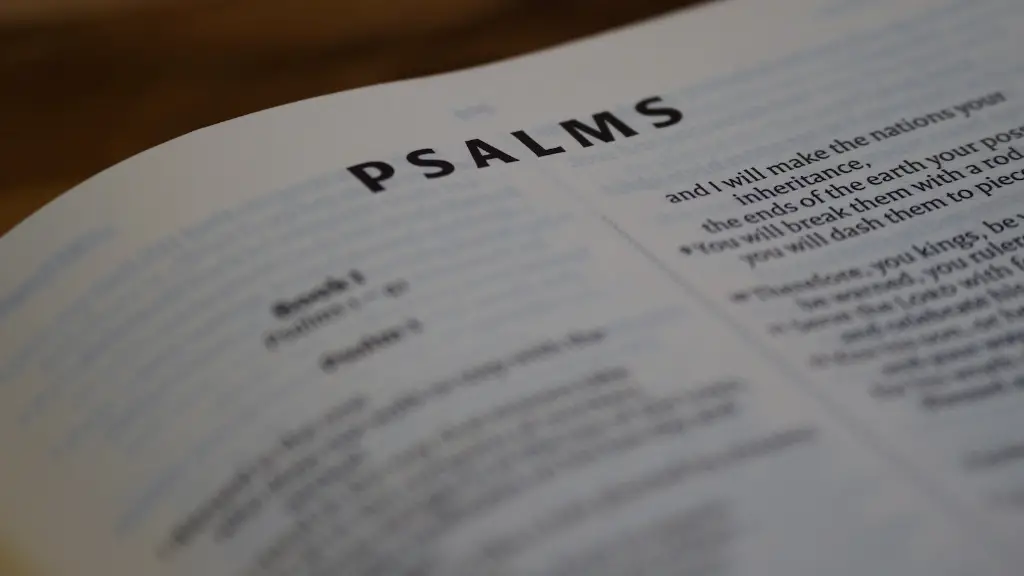Are Dragons In The Bible?
The Bible, the oldest and most sacred text of the Judeo-Christian tradition, is a source of remarkable stories and iconic characters. From Noah’s Ark to Abraham and Sarah, aspects of the Bible, particularly its grand archetypal tales, have been referenced, revisited, and even reinterpreted for thousands of years. One of the more unusual elements of the Bible is the possible presence of dragons.
Creatures bearing more than a passing resemblance to dragons appear in several Old Testament stories. For example, in many translations of the Book of Job, there is mention of a two-headed creature called Leviathan. Elsewhere the Bible mentions the dragon of chaos, Rahab, and crooked serpent, Leviathan. These titles refer to mythical monsters rather than existing animals, and so scholars assess them as symbols of chaos, evil, and apostasy.
Even in passages which are not always interpreted as relating to dragons, there is still a suggestion that such creatures are present. For example, in the Book of Isaiah, there is a reference to a creature known as the “winged sea serpent”. While this concept could be interpreted to mean something other than a dragon, its description is consistent with that of a dragon in a literal sense.
Some scholars argue that dragons may even have had a significant role in ancient Hebrew culture. This was due to the fact that dragons were present in the Mesopotamian culture from which the Hebrews had taken their original religious practices. Other examples of dragon-like creature in the Bible suggest that they may have been used as analogy to describe situations of disorder or chaos.
The most commonly cited example of dragons in the Bible is the imagery used in Revelation 12. This passage describes a battle between God and a “great dragon”. Some scholars interpret this to mean a literal dragon as it contains mythical elements, while others downplay its mythical implications. Regardless, it is clear that the dragon is a strong symbol of evil.
Consequently, authors have adopted the concept of dragons alongside other aspects of the biblical narrative. Whether this is a literal representation of events or simply a metaphor, dragons have become an entrenched element of biblical mythology.
Role Of The Dragon In Spiritual Realities
The Bible contains numerous spiritual realities that may be symbolically represented by a dragon. For example, in Isaiah 27, the dragon’s defeated victims are described as being enslaved by the forces of evil. This could be interpreted as a metaphor for the struggle between good and evil in the spiritual realm.
Likewise, passages such as Isaiah 11 describe a “river of evil”. This river is described as an evil river, from which dragons emerge to bring chaos and destruction. This is seen as a metaphor for the chaotic nature of evil forces. It is possible that dragons may symbolise the evil inside humanity, which can be defeated through faith and prayer.
In addition, dragons in the Bible may also be viewed as a symbol of temptation. This is seen in Job 17, where the dragon Leviathan is described as a “twisting serpent”. This could be interpreted as referring to an urge to disobey God’s will and to succumb to temptation.
Finally, dragons in the Bible can also be seen as a symbol of fear and dread. This is seen in Job 41, where Leviathan is described as a “creature of terror”, a beast so powerful and fearful that no person can stand in its presence. This implies that dragons can represent the fear that overcomes people when they are in the presence of a force they cannot control.
Dragon Imagery In Christianity
Over the centuries, dragons have become increasingly intertwined with religious symbolism in Christian culture. The symbol of a dragon is sometimes used to represent the Devil, and is often depicted in art as a symbol of sin and evil. This imagery is most strongly associated with the Christian image of Satan, who is often depicted as a serpent-like figure with wings.
In the Bible, dragons are sometimes used to represent the enemies of God and the forces of evil. This is often seen in portrayals of the epic battle between good and evil, and in stories of miraculous battles in which dragons are defeated by angels. This imagery is also seen in the Christian concept of hell, which is often depicted as a fiery place where dragon-like monsters lurk.
The image of dragons as symbols of evil and destruction is so strong that it has remained entrenched in western culture. Dragons are commonly used as villains and monsters in fantasy, in tales aimed at children, and in the movies. In these stories, the dragon is typically pitted against a hero, who is responsible for overcoming the dragon’s monstrous power.
Biblical Context Of Dragons
The presence of dragons in the Bible is far from definitive. The passages described as dragons are often open to interpretation and may not refer to literal creatures. Some scholars also argue that these references to dragons may have been simply symbolic of evil, chaos, or destruction.
Regardless, the imagery of dragons has been woven into the fabric of the Judeo-Christian tradition. These mythical creatures have been interpreted to have spiritual significance, and are used as symbols of good and evil, destruction, temptation and fear. As such, dragons undoubtedly remain a potent presence in the Bible.
Stereotypical Connotations Of Dragons
Over the centuries, dragons have become increasingly associated with negative or stereotypical connotations. They are often depicted as inherently evil or threatening, and often described as fire-breathing monsters. This negative view of dragons is largely rooted in western sources of literature, fantasy, and film.
The Bible, however, paints a different picture of dragons. While the image of dragons as symbols of evil is certainly present in some passages, other passages make clear that dragons can be interpreted in many different ways. Some passages even refer to dragons as protectors or creations of God. This suggests that dragons may not always be viewed as forces of destruction and chaos, but can represent virtues such as courage and faith.
Imagery Of Dragons In Past Times
The presence of dragons in the Bible testifies to the power of mythical creatures in the minds of our ancestors. Dragons have long held a role in mythology and folklore, and still remain a powerful imagery even in today’s world. This can be seen in the resurgence of dragon-themed merchandise, toys, and entertainment.
Dragons in the Bible, however, differ in some aspects from the dragons of folklore. The former is a symbol of spiritual strife and chaos, while the latter often portray tales of heroism and victory. This indicates that dragons are used differently in different contexts and have distinct associations in different cultural contexts.
Dragons In Modern Society
Despite the numerous references to dragons in the Bible, their presence in the modern world is often seen as a form of entertainment. There is a long-standing cultural fascination with dragons, especially in fantasy literature and entertainment. This fascination often sees dragons used as villains or as the focus of grand battles.
Dragon-themed merchandise, from video games to movies and books, has become increasingly popular in recent years. The popularity of dragons has now reached a level where they are identified with pleasure and leisure, rather than with the sense of dread and fear they once evoke.
This fascination has even given rise to the phenomenon known as dragonkin. This is a recognition of the ‘dragon within’ — a state of inner power, courage and strength — which dragon fetishists aspire to attain. In this sense, dragons are now seen as representing bravery and strength, rather than fear and chaos.
Conclusion
So, are dragons in the Bible? Dragons certainly appear in certain passages of the Bible, although what these creatures represent remains open to interpretation. In some contexts dragons are a potent symbol of evil, and are used to represent the power of darkness, temptation, and destruction. In other contexts, however, dragons can be seen to represent strength, courage, and spiritual freedom. Ultimately, dragons remain both a potent presence in the Bible and a powerful source of fascination in the modern world.





